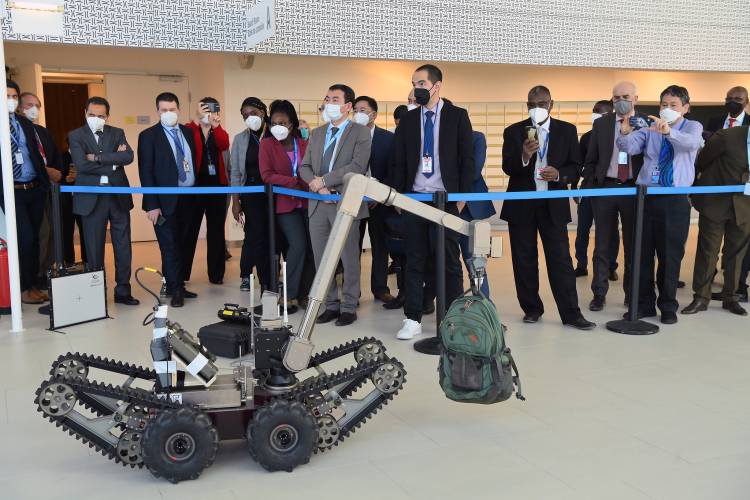In the event of a nuclear security breach, nuclear forensics experts and radiological crime scene investigators play a vital role in establishing and investigating the connections between nuclear or other radioactive material, people, places and events.
Nuclear forensics is the examination of nuclear or other radioactive material, or evidence contaminated with radionuclides, to identify what they are; how, when and where they were produced; and what their intended uses were, in the context of legal proceedings related to nuclear security. This specialised field is growing in recognition as a core component of national nuclear security. As a result, countries are increasingly building and further developing their nuclear forensics capabilities.
"Nuclear forensics is essential in order to deal with nuclear or radioactive material that is missing, lost or stolen," said Elena Buglova, Director of the IAEA Division of Nuclear Security. "Knowing where the material comes from advances the investigation of criminal or intentional unauthorized acts involving or directed at nuclear or other radioactive material."
In April, international experts met to discuss the latest developments and future directions in nuclear forensics, radiological crime scene management and the intersection of these two fields. The hybrid Technical Meeting on Nuclear Forensics: From National Foundations to Global Impact brought together over 190 participants, representing 64 IAEA Member States, the European Commission and several international organizations.
Expert presentations, panel discussions and case studies covered how nuclear forensics and radiological crime scene management enable the use of nuclear and radiological material evidence in support of criminal investigations and judicial proceedings. Experts also identified the need to link nuclear forensics to traditional forensics through the establishment of information exchange channels between judicial authorities or other investigative bodies.
The participants further highlighted the importance of strengthening collaboration among scientific, law enforcement and prosecutorial communities that deal with nuclear or other radioactive evidence at the national and international level. They agreed this was important in ensuring that nuclear and other radioactive evidence can be safely and securely collected at a crime scene, transported to a nuclear forensics laboratory, analysed following standard operating procedures, and utilized in a courtroom setting.
Participants discussed the impact of the COVID-19 pandemic on efforts to build capacity in nuclear forensics, including the effect of temporary laboratory closures on research and development projects. With the inability of technical specialists to travel to attend training courses presenting major challenges in ongoing training, participants agreed that webinars and e-learning activities developed by the IAEA in part addressed this gap. Participants also discussed the development of nuclear forensics capacity in countries new to nuclear forensics, and what the future scientific priorities should be to advance the state-of-practice in the field.
Learning through interactive sessions and demonstrations

A nuclear security response demonstration. (Photo: D.Calma/IAEA)
The meeting included interactive sessions based on a fictitious scenario involving the seizure of radioactive material. Through video injects and live demonstrations, the scenario culminated in a brief mock trial where nuclear forensics conclusions were used to determine whether the suspect had violated legal provisions prohibiting the possession of nuclear or radioactive material outside of regulatory control.
"The scenario weaved a compelling sequence of crime scene elements, forensic analyses, and court room proceedings to reinforce how radiological crime scene management methods and nuclear forensic conclusions are used in judicial proceedings," said Frank Wong from Lawrence Livermore National Laboratory (USA).
The Austrian Federal Ministry of Interior Special Intervention Unit "Cobra", and the Hungarian Police and Centre for Energy Research conducted live demonstrations on how nuclear and other radioactive material can be handled in the event of a malicious act.
IAEA nuclear security programme and nuclear forensics
The nuclear forensics and radiological crime scene management activities implemented by the IAEA are outlined in the Nuclear Security Plan 2022-2025. The Plan includes the development of relevant guidance and on-request provision of training and assistance to States. It also includes coordinated research projects on the topics related to nuclear forensics and radiological crime scene management.
The IAEA develops guidance and e-learning tools to address countries' needs in this field. The latest IAEA implementing guides addressing nuclear forensics and radiological crime scene management were issued in 2015 and 2014 respectively.






